On this day, 111 years ago, the legendary RMS Titanic struck an iceberg, just four days into the ship’s maiden voyage from Southampton, England to New York. More than 1,500 people lost their lives, the highest casualties among crew members and third class passengers. Even more than a century later, the Titanic remains the most famous and infamous shipwreck of all time.
Although nothing can compare to loss of life, a footnote to the event is loss of cargo. Along with commercial cargo, ranging from hundreds of cases of wine to bales of rubber, cork and raw silk, many passengers have entrusted the ship with transporting some of their most expensive possessions across the ocean. First-class passenger and survivor William E. Carter, who had originally booked passage for himself and his family on the RMS Olympic before deciding to go on the last RMS Titanic instead, took his Renault Type CB Coupe with him de Ville of 1912, which was stored in the forward hold of the ship; for fans of the 1997 film Titanic, the car makes an appearance in Jack and Rose’s steamy date under the bridge. The car’s value was estimated at $5,000, or about $150,000 in today’s money.
A number of irreplaceable books were also lost in the sinking of the Titanic, including a rare 1598 copy of Francis Bacon’s essays and a lavishly bound edition of Omar Khayyam’s work. Rubaayyat. THE Rubaayyat volume had a bespoke binding that spared no expense, with a Moroccan leather cover inlaid with gold and ivory, and over 1,000 precious and semi-precious stones. It was at the time the most expensive binding ever created.
The most valuable item aboard Titanic, however, was a 1912 painting by Merry-Joseph Blondel, The Circassian in the bath. According to the insurance claim made after the fact, the work was estimated at $100,000, which equates to just over $3 million today. The painting belonged to Swedish businessman Mauritz Håkan Björnström-Steffansson, who survived by jumping into the vacant bow of one of the last lifeboats. His claim against White Star Line, the British shipping company that operated the Titanic, was the largest item claim for personal or commercial loss.
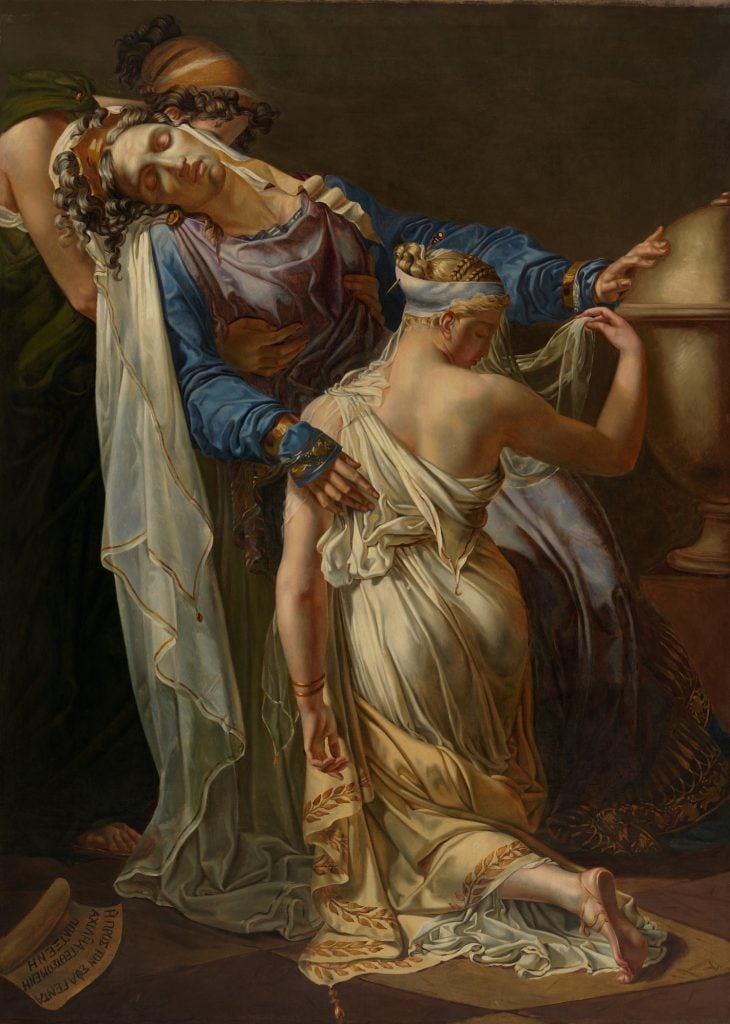
Merry Joseph Blondel, Hecuba and Polyxena (after 1814). Collection of the Los Angeles County Museum of Art.
But what made this unique painting so valuable? What did it look like and who was the artist who painted it? We dove deep to find out more about the most expensive piece of art lost on the RMS Titanic.
Who was Merry-Joseph Blondel?
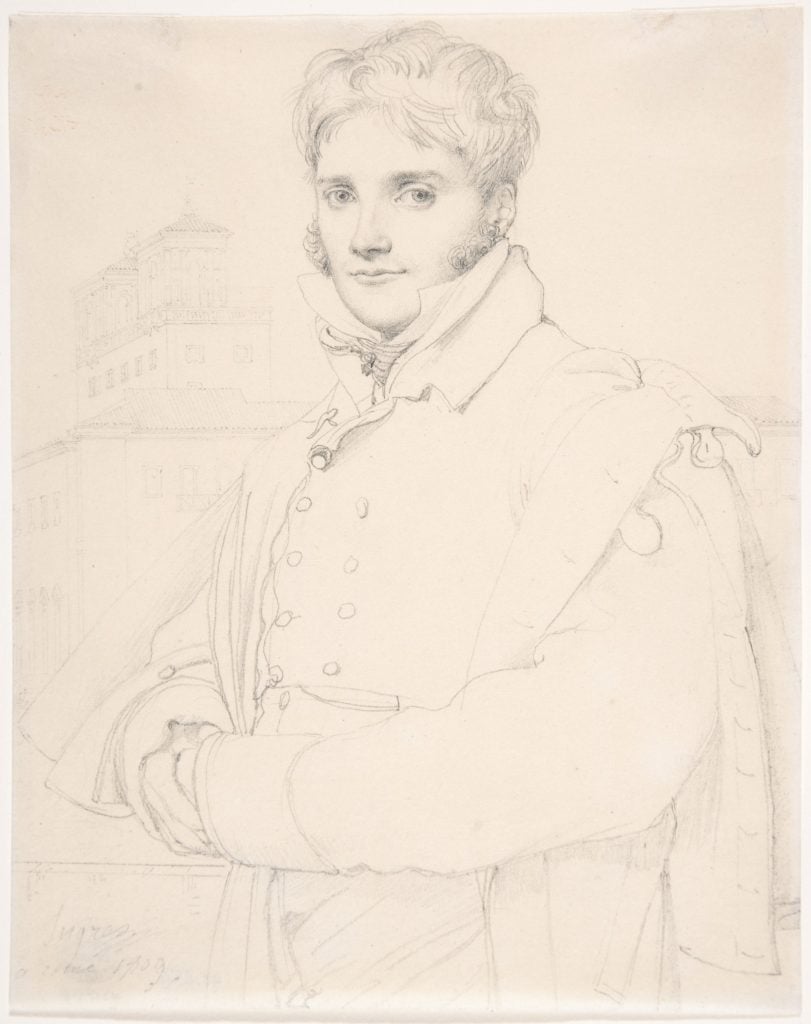
Jean-Auguste-Dominique Ingres, Merry-Joseph Blondel (1809). Collection of the Metropolitan Museum of Art, New York.
Although his name is not widely recognizable today, French neoclassical painter Merry-Joseph Blondel was a well-known and award-winning figure on the 19th-century art scene. Born in 1781, Blondel came from a family of artists; his father, Joseph-Armand Blondel, was a successful painter who also specialized in stucco (or plaster) decoration. After a series of unsuccessful apprenticeships in which his father engaged him, Blondel ended up becoming a pupil of the French painter Jean-Baptiste Regnault in 1801.
Although he achieved early recognition for his work under the tutelage of Regnault, it was in 1803 when he received the Prix de Rome for his painting of the mythical hero Aeneas carrying his father Anchises from the burning city of Troy that his career took off. . The award secured a place for Blondel at the French Academy in Rome at the Villa Medici, however, due to bureaucratic technicalities, it was not until 1809 that he enrolled. Jean Auguste Dominique Ingres was a classmate, and although their respective teachers were rivals (Blondel with Regnault, Ingres with Jacques Louis David), and they frequently competed for the same positions and awards, they remained lifelong friends. .
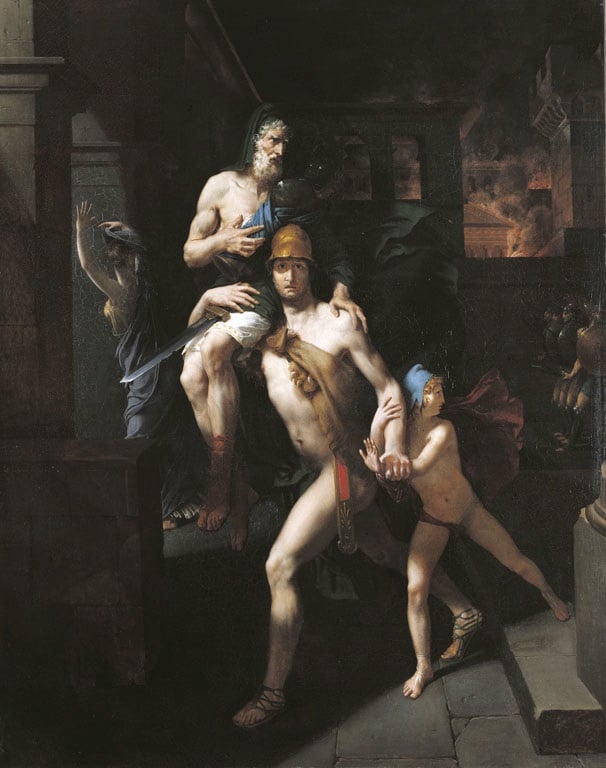
Merry-Joseph Blondel, Aeneas rescuing his father Anchises from the burning Troy (circa 1803).
Eventually, Blondel returned to Paris in the early 1810s and began contributing regularly to exhibitions in the Salon of the Louvre Museum. Blondel’s work was heavily influenced by neoclassicism, a style that exploded in popularity in the late 18th century and remained in vogue throughout the early 19th century. Focusing on classical themes and subjects and employing clean and often austere compositional tactics, neoclassical painting was an apogee of traditional academic painting styles, emphasizing skill, technique, and restraint. Blondel excelled in style and won several prizes and medals for his work, as well as numerous prominent public commissions, including the cycle of frescoes The fall of Icarus (1819) at the Louvre and a series of full-length royal portraits for the Palace of Versailles.
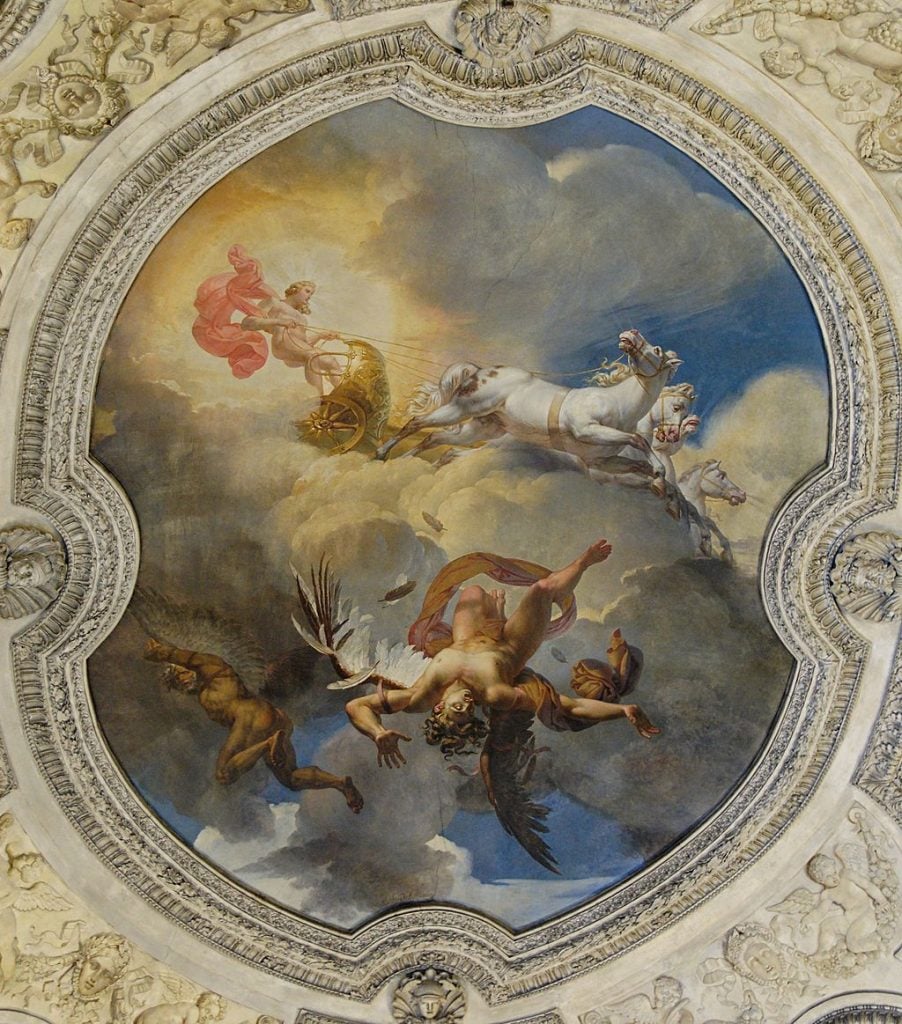
Merry-Joseph Blondel, The fall of Icarus (1819). Collection of the Louvre Museum, Paris.
In 1824, King Charles X of France elevated him to the rank of Knight of the Royal Order of the Legion of Honor, and he obtained a seat at the Academy of Fine Arts in Paris in 1832. Contemporaneously with his ennoblement , Charles X also offered him a teaching position at the École Nationale Supérieure des Beaux-Arts, which he held and occupied until his death in 1853.
The Circassian in the Bath (1814)
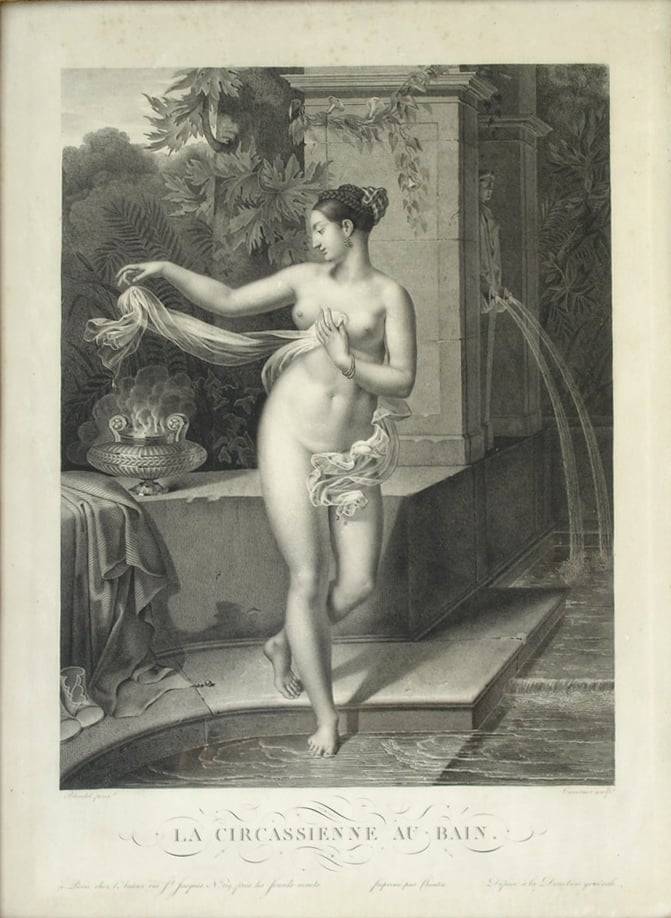
Pierre-Joseph Tavernier, after Merry-Joseph Blondel, The Circassian in the Bath (1814).
At Blondel The Circasienne in the Bath of 1814, sometimes called A Bather, is emblematic of the neoclassical style. Presenting a full-length portrait of an idealized Circassian woman entering a bath inspired by those of classical antiquity, Blondel completed the work just a few years after returning to Paris. It was exhibited at the Paris Salon in the Louvre Museum the same year it was completed, and the initial reception of the work seems to have been decidedly reserved. While the work exemplified Blondel’s technical skill, it lacked the artist’s usual artistic nuance and dynamism.
Despite the loss of the original, lithographic reproductions from French and German periodicals illustrate the somewhat stilted and highly stylized composition. Although strictly adhering to the tenets of neoclassicism, the work lacks an overall sense of grace or natural movement. Over the next century, however, as Blondel became more famous, the work apparently grew in popularity as its value skyrocketed.
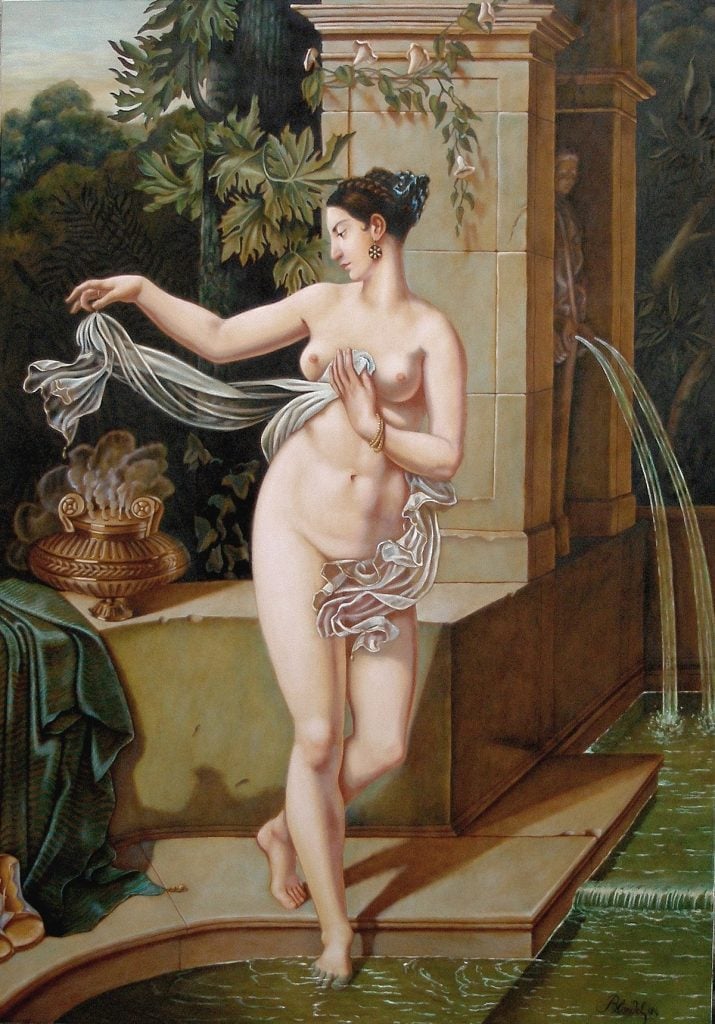
John Parker, after Merry-Joseph Blondel, The Circassian in the Bath (date unknown).
According to the insurance claim made by Björnström-Steffansson for the painting after its loss aboard the Titanic, it was approximately eight feet high and four feet wide – although this has been disputed, as it does not correlate with the scale that Blondel usually worked. outside frescoes, or at the size of period full-length portraits. An anonymous artist of the moniker John Parker conducted extensive research and reproduced the artwork in color in oil on canvas in the early 2010s, providing insight into what the original might have looked like.
When and where Björnström-Steffansson originally acquired The Circasienne in the bath is unknown. After graduating from Stockholm Institute of Technology, where he focused on chemical engineering, he was on his way to Washington, D.C., to continue his education on a scholarship granted by the Swedish government when he embarked on The Titanic. One could infer that he may have brought it with him on the trip as something to eventually help furnish his lodgings; or, alternatively, he may have contributed it as capital when needed.
The following
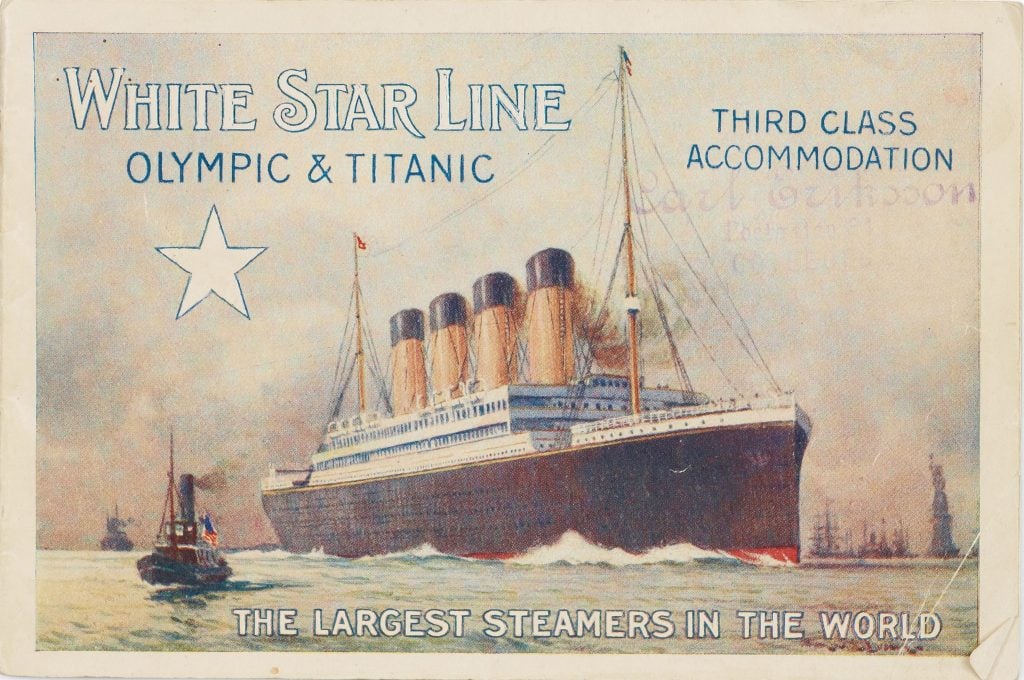
White star line. Titanic and Olympic, ca. 1910. From a private collection. Photo by Fine Art Images/Heritage Images/Getty Images.
On August 22, 1913, the New York Times reported that the total aggregate claims brought against the operator of the Titanic Oceanic Steam Navigation Company, Ltd. (White Star Line) had reached $16,804,112.23 (equivalent to more than half a billion today) – an incredible sum including loss of life, bodily injury and loss of land claims. What was lost on the Titanic can largely be inferred through formal claims made by passengers, however, it is possible that there was more art and artifacts lost than not. were not claimed because their owners perished. Some who survived may have only claimed what they believed to be most valuable, such as jewelry and wardrobes full of high fashion, while others are known to have made widely varying claims, up to at the price of a bar of soap.
It is unclear how much Björnström-Steffansson’s claim for Blondel The Circasienne in the Bath was settled, but in total, we know that as a result of negotiations, the total settlement paid was $644,000, or about $19.6 million today. Ironically, the loss of Blondel’s 1814 painting helped keep his name and practice alive over the centuries, such as on each anniversary of the Titanic’s fateful first and last voyage. The Circasienne in the Bath is highlighted once again as the most expensive item to sink with the ship.
Follow Artnet News on Facebook:
Want to stay one step ahead of the art world? Subscribe to our newsletter to receive breaking news, revealing interviews and incisive reviews that move the conversation forward.
